Creation Through Subtraction
“Less is more” is probably the last phrase that comes to mind when staring at a blank screen that needs to be filled with brilliant ideas. However, the creative method of subtraction is used regularly to generate effective ads, like the ones below.
Using the subtraction technique, elements or components are partially or fully eliminated to attract attention and accentuate a point. Those who learn this technique not only see new possibilities but develop more compelling marketing and advertising materials.
Partial Subtraction Method
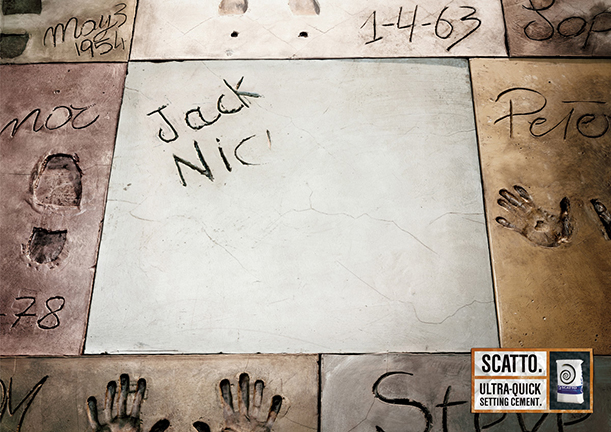


Scatto wants potential customers to know that their cement sets quickly. Because most people could imagine how long it takes to spell their name, the incomplete signature effectively demonstrates its drying speed in a memorable way.
A life preserver represents safety and security. The Costco ad uses half of a life preserver to convey the concept of risk by not having the full protection from an entire life preserver. The image dovetails with the headline and delivers the entire message. The body copy simply provides the details of the plan but is not needed to understand the meaning of the ad.
Understood.org uses partial subtraction by incompletely erasing one message to reveal another. The first message is faded, and not as pronounced as the second message within it. This ad exemplifies the range to which the subtraction technique can be executed from subtle to obvious, and shades of grey in between.
Complete Subtraction Method
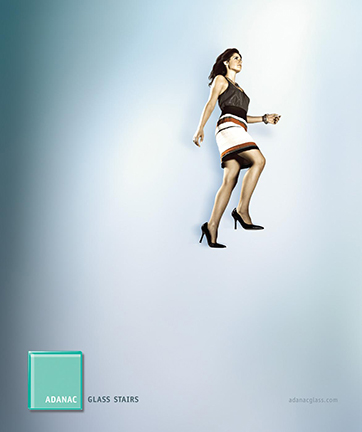

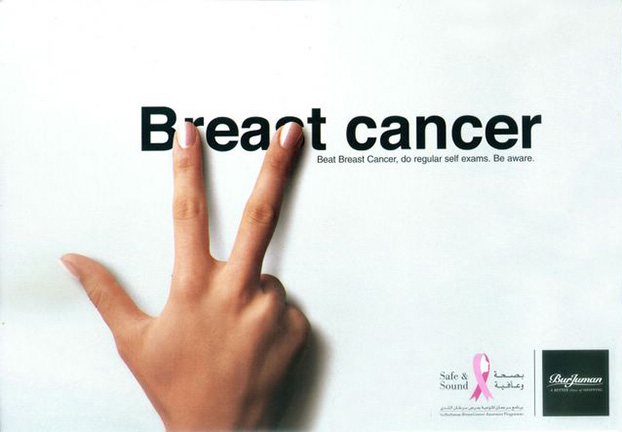
Eliminating essential elements or components of an ad could make a dramatic impact by engaging the audience to fill in the blanks. In the case of Adanac, the product they sell is missing from their ad but is cleverly implied by the model’s motion of walking up (invisible) stairs. The removal of such a critical component accentuates the clarity of Adanac’s glass stairs and makes the ad more engaging by its product’s absents.
The LEMBRAR ad uses a visual metaphor to demonstrate what it’s like to have Alzheimer’s. Erasing the couple’s facial features depicts the reality of Alzheimer’s in a way everyone could understand.
Lastly, the Breast Cancer ad develops its message by eliminating the letters “r” and “s” transforming the statement from “Breast cancer” to “Beat cancer” and altering the ad’s context.
Reduction – A Variation of The Subtraction Method
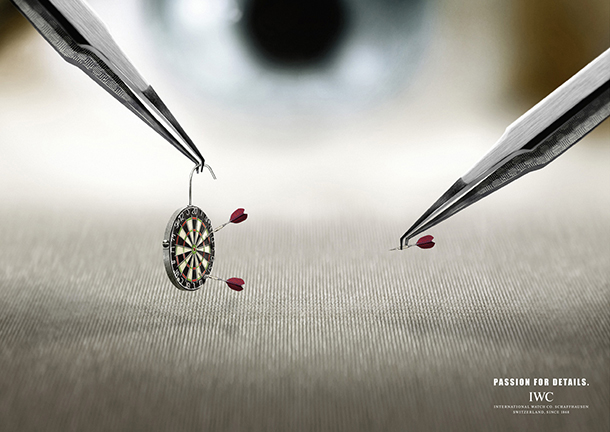
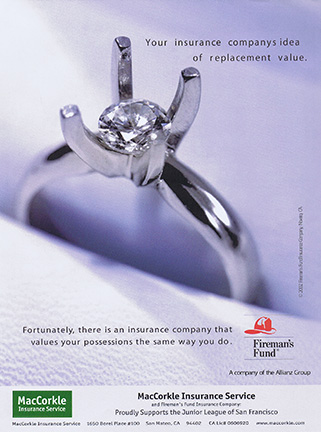

There is a variation of the subtraction technique that pertains to size in the form of reduction. The first ad for IWC (International Watch Company) of Switzerland uses reduction to convey precision and accuracy. The size ratio of the tweezers and dartboard attracts attention because it is the opposite of what is anticipated.
The Fireman’s Fund ad uses a disproportional combination of elements to dramatize a consumer’s perspective of how insurance companies minimize the replacement value of their valuable jewelry. Because the size of the diamond relative to the mount is so inconsistent with expectations, the ad’s visual makes the point all on its own.
Bridgestone’s ad reduces the size of the gas pump to demonstrate the fuel efficiencies of the ECOPIA tire, “saving up to 2 gallons every month.” Like the previous two ads, the demonstrable size difference between what is expected and what appears supports the message and strengthens its effectiveness.
While the subtraction techniques it is not appropriate for all applications, it is always worth testing – even during the early stages of developing marketing or advertising materials. In the best-case scenario, the process will lead to a breakthrough idea. In most cases, it will help trigger additional ideas you might never have thought of without using the subtraction technique.
